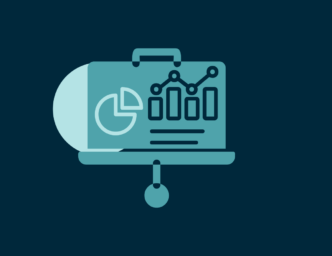Are you considering hiring a UX designer or a UI designer to help you rebrand your website or launch a new app? Wondering what the difference is? To put it simply, a UX designer works on the user experience. A UI designer works on the user interface.
However, to really understand a UX designer vs a UI designer, you first need to understand the different types of design. Then you’ll know what different web designers do and which one you need to hire for your project. Let’s dig in.
What is UX Design?
UX design is all about creating a user experience that is enjoyable, efficient, and easy to use. UX design starts at the very beginning. What is the user’s problem, and how can the solution be easy to share? The goal is to create a design that meets the user’s needs, that also leaves the user feeling good about the interaction.
A good UX design will make it easy for the user to accomplish their goals, whether it’s booking a flight or checking their email. They also can help ensure that experience, like on a website or mobile app, is accessible for different users including compliance with American with Disabilities Act standards for design.
By creating a positive user experience, UX designers can help make complex tasks feel simple and straightforward. In doing so, they can greatly improve the overall usability of a website or app. UX design is not limited to the digital world. Whenever a user interacts with a product, whether that’s a mobile game or a coffee maker, they want to have a good experience. They want to use the product easily and without thinking too hard. Good UX design results in a good user experience.
RELATED: How to Write a UX Designer Job Description
What is UI Design?
UI design typically refers to the graphical elements of a user interface, such as buttons, icons, and layout. This is limited to the digital world.
A good UI design intuitively guides the user through the interface with aesthetically pleasing visual elements. All of the visual, interactive elements of an interface need to work together seamlessly. These include buttons, icons, spacing, typography, color schemes, animations, scroll features, responsive design, and more.
A UI designer will often start with wireframes or mockups created by the UX designer.
What’s the Difference Between UX Design and UI Design?
UX designers focus on creating websites, apps, and other digital products that are both useful and enjoyable. They take into account factors like navigation, layout, and overall flow to create a smooth and efficient user experience. UI designers, on the other hand, focus on the more aesthetic side of things. They choose colors, fonts, and other visual elements that create an aesthetically pleasing experience for users.
UX design is a big picture look of the overall user journey. UI design creates all of the details to make the user journey possible. Here are a few more examples of UX vs UI design:
- UX design comes first, starting with research to identify user needs and to create solutions. After a UX designer has created wireframes or a prototype, the UI designer begins to finesse the details.
- UX design is more analytical. UI design is more artistic.
- UX design focuses on how the overall product feels to a user. UI design focuses on the look of the product.
While UX and UI design are two separate disciplines, they often work closely together in order to create digital products that are both beautiful and easy to use.
How Do UX Design and UI Design Work Together?
UX design and UI design are two integral parts of creating any digital product or experience, whether it’s a website, app, game, or software program. Good UX design can be hindered by bad UI design. Without a good UX design at the beginning, it’s hard to create a good UI design. A successful digital product needs both.
Here are two examples:
- UX design is knowing that hyperlinks should be a different color than other text, because that tells the user where to click to find more information. UI design is choosing the hyperlink color so it pops on the screen (and fits in with the company branding), and entices the user to click on it.
- UX design sets up a website’s navigation so a user can easily get from one point to another. UI design makes the navigation touch points (buttons, menus, links, etc.) easy to use on desktop or mobile so the user actually does get from one point to another.
Though they are distinct disciplines, UX and UI design work together to create digital products that are both functional and visually appealing. By collaborating closely from the beginning of a project, UX designers and UI designers can ensure that the final product meets the needs of both users and businesses.
What Does a UX Designer Do?
A UX designer is often a problem solver. They take complex challenges and turn them into simple, elegant solutions. Their job is to design digital products that are both usable and enjoyable for the people who use them. A big part of UX design is understanding how users interact with technology, and then using that knowledge to create designs that meet users’ needs.
Typical responsibilities for a UX designer include:
- conducting user research
- developing user flows
- mapping content
- designing wireframes
- creating prototypes
- coordinating with UI designers
- testing prototypes
- analyzing user interactions
UX designers need to have strong problem-solving skills and be able to think creatively in order to come up with the best solutions for their users. They often have to think about the psychology of the user and how they will feel during the experience. They also need to be able to effectively communicate their ideas, as they will often be working with teams of other designers and developers. Asking the right UX designer interview questions will allow you to assess these hard and soft skills.
What Does a UI Designer Do?
A UI designer is responsible for creating intuitive, user-friendly interfaces for web and mobile applications. To do this effectively, they must have a deep understanding of human interaction, differing abilities, and behavior. They use this knowledge to design interfaces that are both visually appealing and easy to use.
Typical responsibilities for a UI designer include:
- creating brand style guidelines
- researching competitor products
- designing graphic elements
- creating interface mockups
- coordinating with UX designers
- adapting design elements for different screen sizes
- maintaining accessibility
UI designers need to be comfortable working day-to-day with typography, color theory, and grid systems. They also need to be able to think like a user to anticipate what users will want and need from an interface. With these skills, these designers can create user interfaces that are both beautiful and user-friendly.
When Should I Hire a UX Designer and/or a UI Designer?
Do any of these scenarios sound like you?
- You have a great idea for a new product, but you need help with the prototype.
- Your business website needs a complete overhaul.
- You’re working on a big rebrand for your business, and you need help updating the website with the new branding.
- Clients have been requesting an app so they can more easily hire your services.
In the first scenario, you need a UX designer. For the second and fourth scenarios, you need both a UX designer and a UI designer. In the third scenario, you need a UI designer.
Of course, there are many more reasons you might need to hire either designer. Once you know what kind of help you need, you then need to determine how to hire them.
If you anticipate multiple big projects that will develop over time, especially in web and app design, hire both a full-time UX designer and UI designer. For a small team or a small project, one web designer might even manage both the UX and the UI design, but be clear about that in the job description.
If you’re in the middle of a big project and need extra help to meet deadlines, hire temps or independent contractors.
Finally, if you’re planning a big project and don’t have the time to hire multiple UX and UI designers — not to mention project managers and developers — you can outsource to a team of tech experts.
If you’re hesitant to hire a dedicated designer, consider the business benefits. According to a McKinsey report, companies with a strong focus on design outperformed industry-benchmark growth.
Still not sure of the best path forward? By working with a staffing company, you can connect with a hiring expert to find the best solutions to your design needs.
Hire Your Next Designer with Insight Global
Insight Global has more than 20 years of experience with hiring in Information Technology (IT). You can trust us to understand a UX designer vs a UI designer and to help you hire the best talent for your unique needs. Contact us today!


 by Brita Long
by Brita Long



 by Alexandra Woodford
by Alexandra Woodford 

